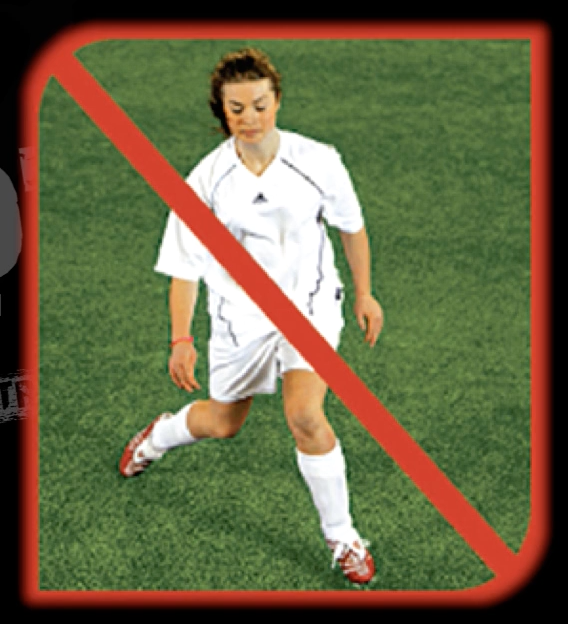
150,000 ACL injuries occur each year in the US. Most are in female athletes.
Yup Tiger Woods. Why?
Because he introduced the idea that specializing in one sport from birth is the key to riches and success.
OK, not him specifically. But the idea of being 'The Next Tiger Woods'. The prevailing theory is that by practicing one sport all year, the athlete will develop the skills of that sport and become dominant. Then they'll get the scholarship, get the girl (so to speak), go pro and be rich and famous.
Well that's wrong. Flat. Out. Wrong.
But the level of knowledge of youth sports coaches and parents is not the topic for today. Saving your athletes from a career ending injury, peaking at 15 or suffering burnout is. Sport specialization before the mid-teens is a bad idea. Think I'm an idiot or your kid or athlete in THE exception to the rule?
Come on, we all know someone who thinks like that.
Not you of course…
Listen to Al Vermeil. Al Vermeil is the only strength coach to have World Championship rings from BOTH the NFL and the NBA. He is also the only strength coach who has been in the NFL, NBA and Major League Baseball. Al was honored by being one of the initial inductees to the Strength Coaches Hall of Fame in June 2003.
And he doesn't just work with pro athletes. Here is what he had to say in our recent interview:
But why talk theory and opinion when we can look at real research. According to Tudor Bompa (1999), the father of
modern program design: "Regardless of how specialized the instruction may become, initially there should be exposure to multilateral (overall athletic) development to acquire necessary fundamentals. You can often observe extremely rapid development in some young athletes. In such cases, it is paramount that the instructor resist the temptation to develop a specialized training program. A broad, multilateral base of physical development, especially
general physical preparation, is a basic requirement to reach a highly specialized level of physical preparation and technical mastery. Such an approach to training is a prerequisite for specializing in a sport or event.
The followers of multilateral, overall training in the early (8-15) years of athletic development will build a solid base and avoid overuse injuries, monotony, and staleness in training."
Let's look at two studies performed in two different countries whose athletic dominance was well established a couple decades ago. These studies prove the validity of this generalized approach to training young athletes, regardless of sport.
- A 14 year East German study (Harre 1982) divided a large group of 9-12 year olds. One trained under the North American model (early specialization in a specific sport) and the other used a generalprogram of participating in a variety of sports.
- Nagorni's (1978) Soviet study looked at the best Soviet athletes. They started training at 7 or 8, participating in a variety of sports. Specialized sports programs started between 15-17 years old.
What were the results?
Early specializers had quick performance improvements. I'll give you that. But their lifetime best performances came at age 15-16 due to quick adaptation. (Remember that college scholarships are year to year, not 4 year deals. Trust me, you don't perform, they won't keep paying your kid to compete. There are plenty more just like them who will.)
Early specializers had inconsistent performances compared to their multilateral peers. By 18 many early specializers quit the sport due to burnout and overuse injury. Multilateral athleteshad a much longer shelf life. Early specializers are prone to injuries because of forced adaptation. Multilateral athletes have few injuries.
The bottom line is this:
If you want your athletes to have the greatest chance at long term success, don't specialize them when they are developing. As parents it is your responsibility to think long term. And to watch out for the (many) coaches who
only care about what they can get out of your athletes right now. As coaches you have to make sure you are doing what is best for the athlete, not what is best for your ego. And deep down you know which approach you're really taking.
So if you want to roll the dice on your athletes or children and hope they avoid that ACL injury,burnout or peaking at 16, I can't stop you.
But it's tough to look a crying kid in the eye when they fail to perform because they can't meet the level of performance at 17 that they could do when they were 14.
Unfortunately it has been seen it many, many times. The safest, most appropriate training program is
one that is based on developing the total athlete.
Recommended Athletes' Acceleration
Products
—————————————————————————–




I couldn’t agree more. I have seen kids who play tennis every day and who have real poor coordination skills. So I tried putting them through one of the progressions in my very basic trampoline programs that is originally meant as a fun multi-planar interval training session. After a few weeks they started moving better on the court. You definitely should encorage variation vs. early secialization in training for kids! Not only to prevent boredom. Developing well balanced and coordinated kids is not only good for performance but it is definitely the more healthy way to go too. If you develop those skills as a kid, then you can always chose where to specialize later. Of course for some sports it is needed earlier than others.
There is a more serious issue. I agree with your assessment, but I also believe team sports (and golf, NASCAR) have made us a nation of spectators. While we push our kids into “mainstream” sports and possibly sacrifice their opportunity to crosstrain and become all-around athletes, adults sit in front of the TV at home or at the bar to vegitate. We are a nation of fat and lazy Monday morning quarterbacks. Look around. Obesity is rampant…but we sure know the status of our sports teams! Keep this in mind: your kids inherit your lifestyle.
I am from Trinidad & Tobago in the Caribbean, Ato Boldon and Richard Thompson Olympic runners both from Trinidad and Olympic medallists both were soccer players before switching to athletics. Boldon left Trinidad on a soccer scholarship and was warming up when he was noticed by a running coach. Thompson was captain of his college under 14 soccer team and played on his Intercollegiate team in 2003 before leaving for overseas. Specialization too early is folly……Keep hitting them with the truth…….
so should we blame mike agassi (andre’s dad) or richard williams (serena and venus’ dad) for putting them through such a rigorous training back then ? maybe the perfect example right now is the chinese. we all have seen the segment on 60 minutes and HBO.
you decide
Latif,
You do very good work. I admire your drive and throughness, BBBUUTT….
Tudor Bomba is not the father of modern program desgin. It was the result of a lot of hard research and trial and error through out the old Soviet/ Eastern Bloc and the United States.
In the fifties and sixties much research was done in the U.S. that was totally ignore by coaches and sports federation throughout the America. I know because one of those researchers I am honored to call friend.
Dr. Micheal Yessis did his PhD on the improvment of endurance through strength training. He also happens to fluent in Russian and during the 60’s, 70’s and 80’s made trips to the Soviet Union to study their methods. Fro many years he translated and made this work available for public consumption with little success. In his time he made friends with many of his eastern counterparts most specifically Yuri Verhosanskey, plyometrics.He was also a member of the team who developed Valiery Borzof
Later in my studies/carreer I spent several years under the tutelage of Baruch Elias, coach of Dwight Stones, Dennis Johnson and at least 30 other H.Jer’s of 7’0. He as given clinic throughout Europe under the auspices of the IAAF.
None of them thinking that Mr. Bomba is particularly innovative at anything other than marketing other peoples work as his own.
You are right about specialization to soon. Tiger Woods is currently the most famous current example but he also played other sports for a while in high school. As a freshman at Western High Anaheim California he was a member of the 4x 100 relay with a time in the high 10’s and he could also dunk.
Read Why Michael Can’t Hit. According to the author, there is a small window of opportunity to learn certain skills ie. hitting a curve ball, becoming a concert pianist or an Olympic gymnast and none of these skills are attainable after a certain age.